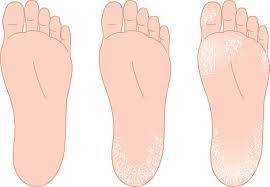Cracked legs or heels also called heel fissures are common foot conditions that can cause pain and discomfort mostly resulting from dry skin. But it can also occur in response to infection, scratches, and other trauma. In the case of cracked legs, most of the time one symptom often leads to another.
Symptoms Associated with Cracked Skin:
Blisters
Crumbling nails
Burning feeling
Itchy skin
White or silver plaques
Swelling or redness
Rashes
Certain medical conditions, particularly those causing nerve damage or reduced sweating, can also lead to cracked skin. Environmental factors, such as cold weather or dry air, further exacerbate the condition.
Common Causes:
Walking barefoot
Prolonged standing
Fungal infections
Vitamin deficiencies
Psoriasis
Obesity
Hypothyroidism
Atopic dermatitis
Eczema
Palmoplantar keratoderma
Prevention Tips:
Proper footwear is crucial in preventing cracked heels. Opt for shoes with wide heels that offer support and cushioning.
Avoid standing in one position for extended periods.
Moisturize your feet daily to maintain skin hydration.
Refrain from wearing flip-flops, which provide minimal support.
Invest in high-quality, clinically-tested padded socks.
Use a pumice stone after showering to prevent skin thickening.
Consider using silicone heel cups to lock in moisture.
Cracked heels can make walking difficult and may disrupt daily activities if left untreated.
Tips to Manage Cracked Heels:
Gently pat your feet dry after washing.
Use a foot scrubber to remove hard, thickened skin.
Soak your feet in lukewarm water for a soothing effect.
Apply a high-quality heel balm to the affected area.
Stay hydrated by drinking plenty of water.
Before bedtime, apply a thick, oil-based cream and cover your feet with thin cotton socks to help the moisturizer penetrate deeply.
Ignoring dry, cracked heels can lead to the development of fissures over time. If the condition worsens, it's important to consult a doctor for proper treatment.
|

